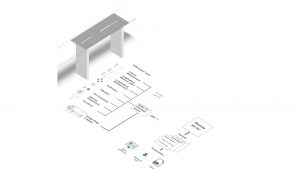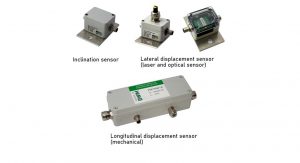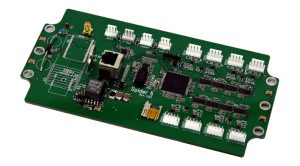Dr Markus Petschacher, CEO of Petschacher Software und Projektentwicklungs (PSP), outlines iBridge – a revolutionary new framework that allows a bridge monitoring system to be tailored to a particular bridge and which covers both structural health and traffic monitoring.
Road bridges are vital to the free flow of goods and therefore to Europe’s economic health. It is critical, therefore, that bridges should be properly maintained. The key to maintaining a bridge’s structural health is monitoring. The gold standard for bridge monitoring systems is, and will remain, an on-site physical inspection by experts. However, inspections are feasible only at intervals of several years: they represent a snapshot of the bridge. Faults may therefore be well-advanced – and expensive to remedy – before they are detected. Transient events, such as traffic surges and overloaded vehicles, will inevitably be missed. Bridge monitoring systems allow continuous monitoring of the bridge, from a remote location, in real-time. They help engineers make timely, informed decisions about bridge maintenance.
Bridge monitoring systems may observe processes that occur over years, or even decades, such as the effects of corrosion, or changes in geophysical conditions. Equally, they may need to monitor transient events, such as vehicle crossings, with micro-second resolution. Until recently, trying to build a system that can perform both of these tasks has led to unacceptable compromises in performance. Consequently, traffic monitoring and structural health monitoring systems are usually undertaken by separate systems. This represents a missed opportunity, since traffic, bridge loading, and structural health are closely connected.

Petschacher Software und Projektentwicklungs (PSP) has been active in both structural health and traffic monitoring for many years. Both our traffic monitoring system, iBWIM, and our bridge monitoring system, iSHM, use an on-site, lightweight embedded system that acquires data and passes it over the mobile telephone network to a remote server for analysis, archiving, and presentation to the user. Together with the use of solar cells, this approach has meant that our systems can be applied to remote bridges with a minimum of infrastructure. Our experience in the field has made it clear that there is a real need to integrate traffic monitoring with structural health monitoring.
iBridge
We have recently introduced our new iBridge framework. This emphasises a modular approach to both hardware and software, which means sensors are ‘plug and play’. It also allows for a much more flexible approach to the choice of sensors for any given task. By optimising the system at the sensor level, the overall system becomes much more capable of working with a diverse range of sensors. Essentially, the iBridge framework allows a bridge monitoring system to be tailored to a particular bridge.
This framework replaces olderanalogue sensors with smart sensors that connect to an embedded data logger over a network. The smart sensors carry out A/D conversion and specialised signal processing on-board, and pass a standardised data packet to the logger. The logger need not have dedicated hardware for a particular type of sensor. Instead, the logger can be configured entirely in the software. At the remote server, modularised software components that are specialised for the analysis and display of data from a particular sensor type can be easily configured to suit a particular bridge.

The Advantages of Combining iSHM and iBWIM
Switching to the new digital sensor network clearly gives an improvement in signal quality. However, just as importantly, by standardising the method of data measurement we can use a more diverse set of sensors. One example of this is the integration of transient iBWIM data into our structural health systems.
Loading is obviously one of most important sources of bridge wear and tear. Specifically, ‘cyclic loading’ – where each axle of the vehicle imposes loading unloading cycle – and ‘exceptional loads’, which impose high amplitude cycles, are important for fatigue modelling. To obtain an accurate picture of these cycles, events must be sampled in the microsecond range. The cumulative effect of cyclic loads on the fatigue strength of the bridge may take years to appear. By integrating iBWIM and iSHM into a common framework we are able to quantify this important aspect of structural health monitoring.
Measurement, of course, is not enough: values must be analysed before the relevant data can be presented to the user. The staff of PSP have been active both in academic research into bridge fatigue and deterioration as well as its application in the field, for over a quarter of a century. During this time, we have developed advanced stochastic models that can predict the likely evolution of the bridge under the measured loading conditions. These models can also be used to estimate the effects of different maintenance strategies and traffic patterns.
Conclusions
Structural health monitoring is a critical component in any strategy to maintain Europe’s infrastructure. A comprehensive monitoring system must include data from a diverse range of sensors – each with its own characteristics. To be commercially feasible, a bridge monitoring must be sufficiently flexible to be optimsed for a wide variety of tasks and bridges. The iBridge framework is designed to achieve this.
This adaptable system will increase the range of bridges to which it is economically viable to apply monitoring. We believe that the iBridge framework makes a significant contribution to Europe’s ability to maintain its infrastructure.
Dr Markus Petschacher
CEO
PEC – Petschacher Consulting, ZT-GmbH
+43 4276 33780
office@petschacher.at
www.petschacher.at
Please note, this article will also appear in the third edition of our new quarterly publication.










